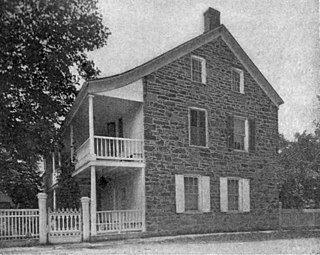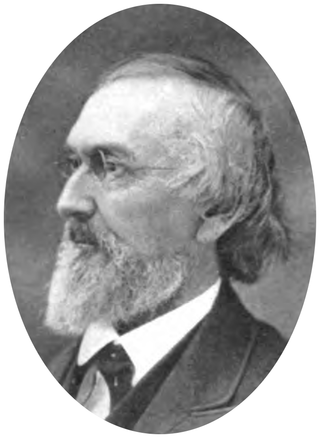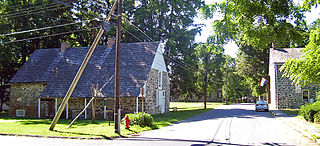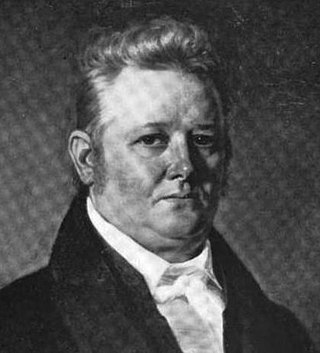Related Research Articles

Abraham Bruyn Hasbrouck was a United States Congressman from New York and the sixth President of Rutgers College serving from 1840 to 1850. He was a slaveholder.

Louis Du Bois was a Huguenot colonist in New Netherland who, with two of his sons and nine other refugees, founded the town of New Paltz, New York. These Protestant refugees fled Catholic persecution in France, emigrating to the Rhenish Palatinate and then to New Netherland, where they settled in Wiltwyck and Nieuw Dorp (present-day Hurley, New York, settlements midway between New Amsterdam and Beverwyck before ultimately founding New Paltz.

Jacob Brinkerhoff was an American jurist, Congressman, and author of the Wilmot Proviso. He served two terms in the U.S. House of Representatives from 1843 to 1847.
Hasbrouck has multiple meanings:

Josiah Hasbrouck was a United States representative from New York. Born in New Paltz, he completed preparatory studies and conducted a general merchandising business. He was a second lieutenant in the Third Regiment of Ulster County Militia in 1780, and was supervisor of New Paltz from 1784 to 1786 and in 1793, 1794, and 1799 to 1805. He was a member of the New York State Assembly in 1796, 1797, 1802, and 1806.

Historic Huguenot Street is located in New Paltz, New York, approximately 90 miles (140 km) north of New York City. The seven stone houses and several accompanying structures in the 10-acre National Landmark Historic District were likely built in the early 18th century by Huguenot settlers fleeing discrimination and religious persecution in France and what's now southern Belgium. After negotiating with the Esopus Indians, this small group of Huguenots settled on a flat rise on the banks of the Wallkill River in 1678. The settlers named the site in honor of Die Pfalz, the region of present-day Germany that had provided them temporary refuge before they came to America. Archaeological finds indicate that the immediate area settled by the Huguenots was occupied by Native Americans prior to European contact. The site is one of the oldest continuously inhabited settlements in the United States.

Abraham Joseph Hasbrouck was a United States representative from New York and a slaveholder.

Harcourt Joseph Pratt was a U.S. Representative from New York and notable politician from Ulster County.

Locust Lawn is a surviving 19th-century farm complex situated on the bank of the Plattekill Creek on New York State Route 32, outside of New Paltz, Ulster County, New York.

The Bevier House Museum, referred to simply as the Bevier House or Bevier Stone House prior to its conversion from a private residence, is located in Marbletown, near Kingston, New York. The house is also the home of the Ulster County Historical Society and is currently open to the public as a museum.

The Major Jacob Hasbrouck Jr. House is located on Huguenot Street in the Town of New Paltz, New York, United States. It was built in 1786 by Hasbrouck, grandson of Jean Hasbrouck, one of the original Huguenot settlers of the New Paltz area in the late 17th century, after he had moved out of the family home, two miles (3.2 km) to the south in what is today the Huguenot Street Historic District. A descendant of his lives in the house today, and it is believed to be the only 18th-century stone house in the New Paltz area continuously owned by the family that first built it.
Jacob Hardenbergh was an American lawyer and politician from New York.
Robert Lyndon"Ziggy"Hasbrook was an American professional baseball player. He played parts of two seasons in Major League Baseball for the 1916 and 1917 Chicago White Sox, primarily as a first baseman.

Abraham Ogden was an American lawyer and politician who served as U.S. Attorney for the District of New Jersey from 1791 to 1798 and negotiated the Treaty of New York (1796).
The Dwight family of New England had many members who were military leaders, educators, jurists, authors, businessmen and clergy.
Abraham A. Deyo was an American politician from New York.
Henry Richard DeWitt was a New York lawyer and politician. A member of the Republican Party, he served in the New York State Assembly from 1914 to 1916.
The Hasbrouck family was an early immigrant family to Ulster County, New York, and helped found New Paltz, New York. The Hasbrouck family were French Huguenots who fled persecution in France by moving to Germany, and then the United States. Two brothers, Jean II and Abraham, are the ancestors of almost all individuals in the United States with the last name "Hasbrouck," or some variation.
Cornelius Abram Jansen Hardenbergh was an American politician from New York.
Gilbert David Blauvelt Hasbrouck was an American lawyer, politician, and judge from New York.